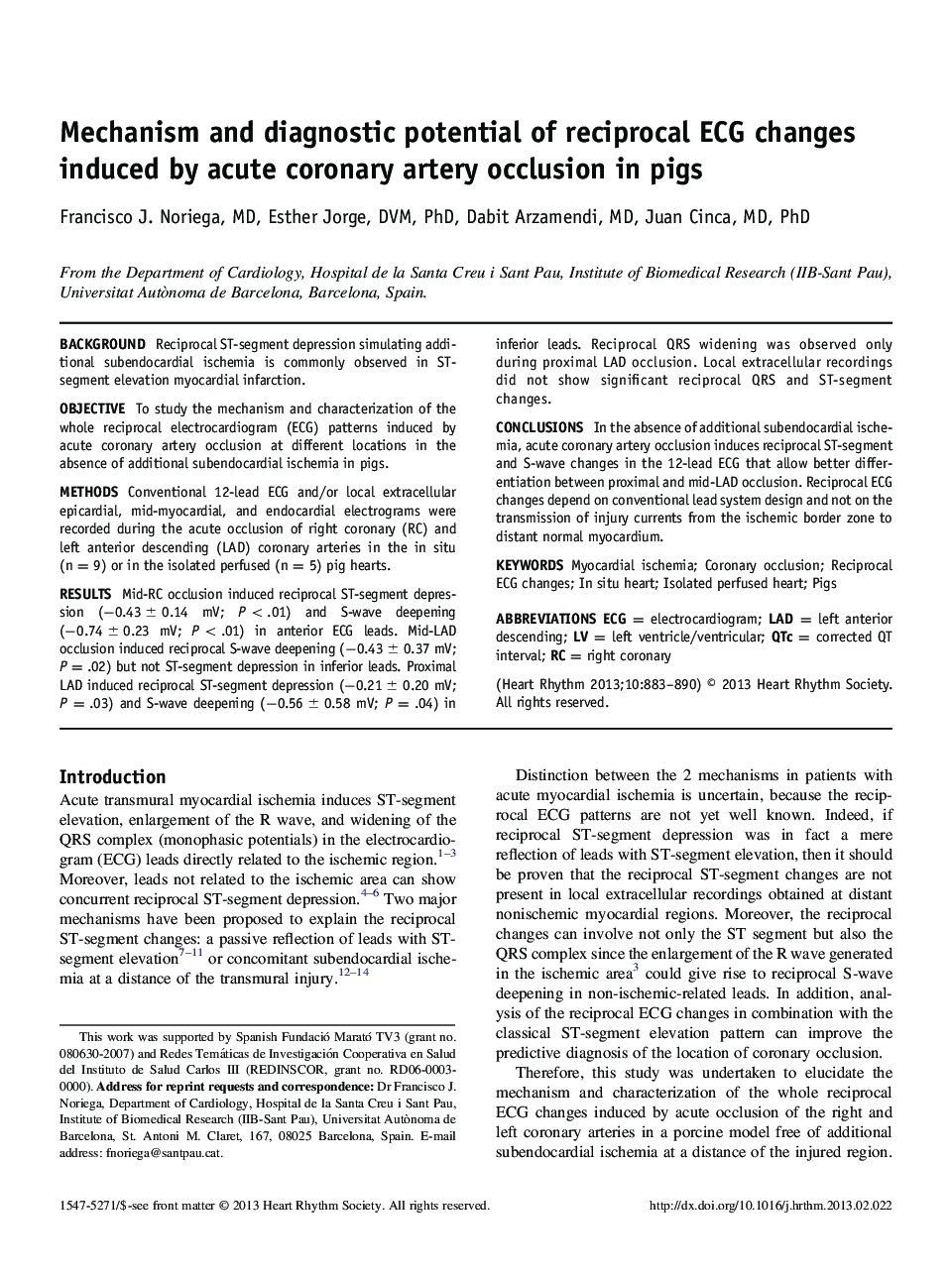| Article ID | Journal | Published Year | Pages | File Type |
|---|---|---|---|---|
| 5961199 | Heart Rhythm | 2013 | 8 Pages |
Abstract
In the absence of additional subendocardial ischemia, acute coronary artery occlusion induces reciprocal ST-segment and S-wave changes in the 12-lead ECG that allow better differentiation between proximal and mid-LAD occlusion. Reciprocal ECG changes depend on conventional lead system design and not on the transmission of injury currents from the ischemic border zone to distant normal myocardium.
Keywords
Related Topics
Health Sciences
Medicine and Dentistry
Cardiology and Cardiovascular Medicine
Authors
Francisco J. MD, Esther DVM, PhD, Dabit MD, Juan MD, PhD,
